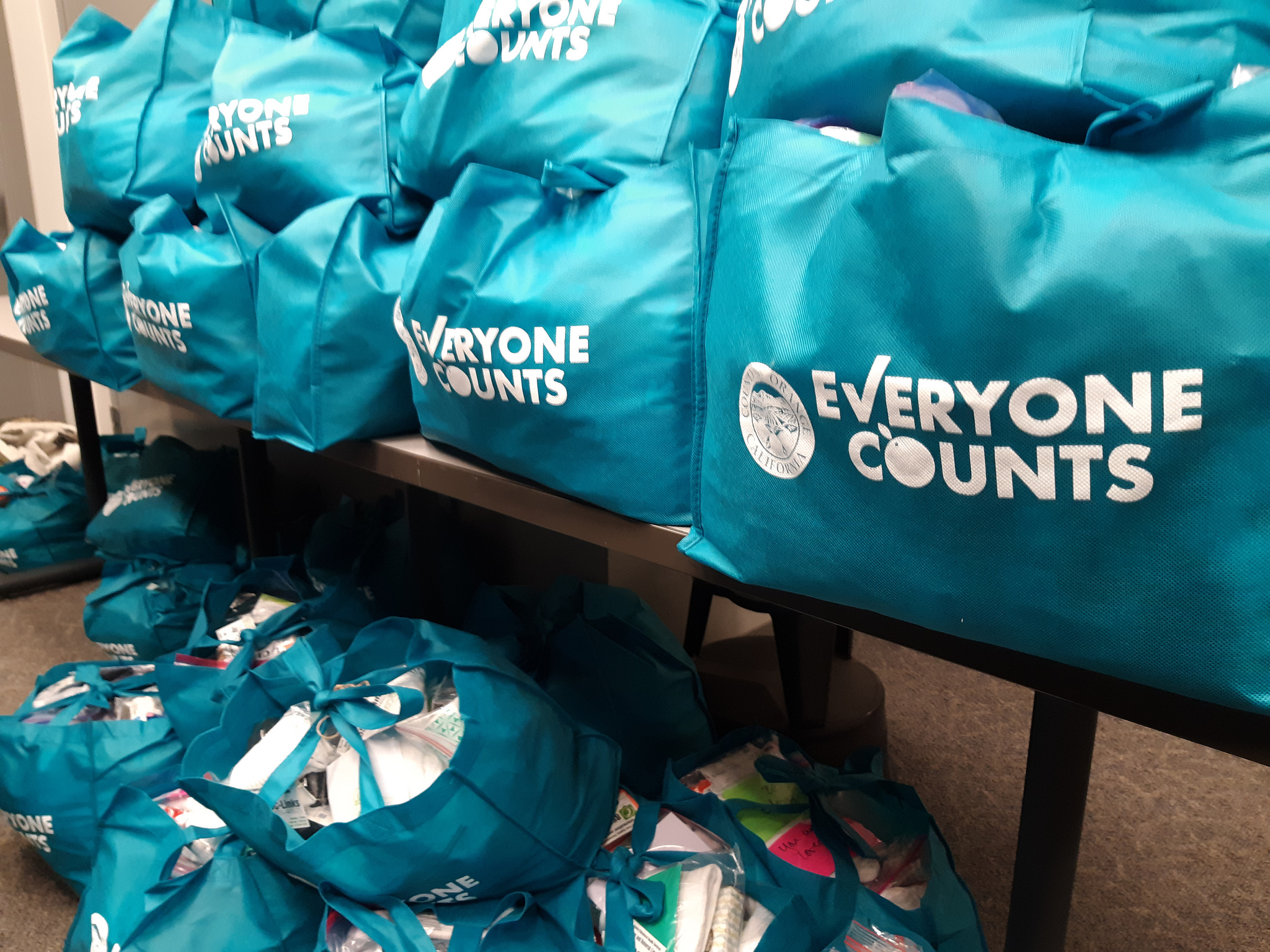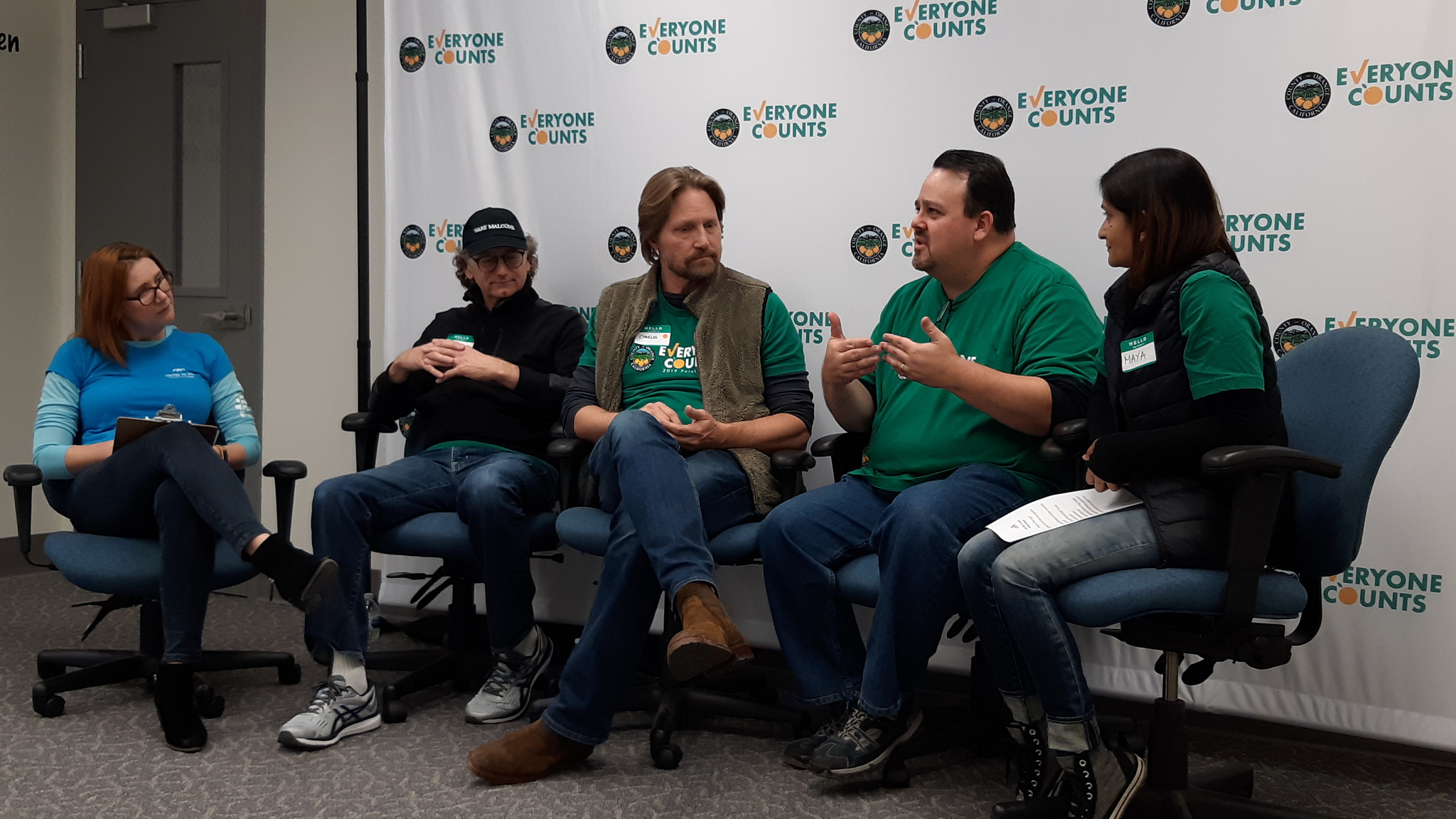Point in Time Count Overview – January 2019

If you ever wondered just how many people are currently homeless in your community, what demographic information they have, or which areas around the country are most populated with homeless individuals, you’ll be pleased to know that that organizations like United to End Homeless contribute to a national data collection effort called a “Point In Time Count” to get those answers.
What exactly is the Point in Time Count?
Organized by the County of Orange, in partnership City Net with 2-1-1 Orange County and the Hub for Urban Initiatives, the Point In Time count is a biennial count of people experiencing homelessness on a given point in time during the last ten days in January. Here in Orange County, we sent out teams to count and interview people on Wednesday, January 23 and Thursday, January 24.
The count provides essential information that helps the County better understand the current condition of homelessness in the community, and highlights areas where the County and its partners can respond to homelessness. The count includes people who are unsheltered (out on the streets, living in cars or RV’s, etc) as well as those who are in shelters for people who are homeless e.g. emergency or transitional shelters. It is also a federal requirement of HUD’s to complete a count, the data is used to assess homelessness across the entire country and determine how funding should be used nationally.
Volunteers were able to sign up for a variety of roles, all necessary to ensure a successful event. A Team Captain along with three to five Surveyors canvassed areas of the community and once homeless individuals were encountered, the team would administer a survey using a smartphone app to collect demographics, subpopulation information and answer to local questions.
Larry Armstrong, Chairman and Founder of United To End Homelessness, shared his experience of the count with Becks Heyhoe and members of the Leadership Council and how it impacted him.
 Q&A with Larry Armstrong
Q&A with Larry Armstrong
Becks: What did you guys do this morning? What was happening?
Larry: It was interesting to go out there, even after the training, I was pretty apprehensive about what to expect, especially having done this before. It was interesting just to go find out where people were and engage them and find out what was happening.
We did get a lot of positive feedback. People were grateful to receive the bus pass and the little care kit they got. They were willing to talk to us and answer questions and were happy to receive that. It was pretty cool.
Becks: Did anything take any of you by surprise this morning?
Larry: When you’re out there specifically looking for people who are homeless, to find them, to talk to them, as opposed to driving around in your normal daily life and you may happen to see somebody here or there. You figure out that they are all different. But they also are living differently. There was a gentleman in a park, in a neighborhood, sort of by himself. There were several people in an urban location, just a little niche here or there by themselves with one other person. And then there were some little encampments along the railroad tracks, which were completely different. Everyone was unique and were finding their own individual solutions. It was pretty interesting.
Becks: If you could describe your feelings in one or two words after this count, what would that be?
Larry: I feel like there’s progress. The more we can get our arms around this, the more accurate data we will have which means we understand the problem better than we did before – then we can address it. I was pretty excited to be out there on the ground, understanding it, I think all of us were. We had a great team. Our team was in a very dense area, and despite it being a small geographic area in our map today, we talked to a lot of people, it was amazing actually. I’m excited, I’m very optimistic actually about this today. I’m emotionally though too today. I had a couple of times where it was hard to keep it together.
The Point in Time Count provides the information necessary for the County to better understand homelessness in the community. Whether we discover a veteran stricken with a chronic disability or a homeless family seeking to get back on track, each addition to the count can help campaigns such as United To End Homelessness towards the best course of action to aid the homeless situation in our communities and provide the appropriate housing solution for our homeless neighbors.